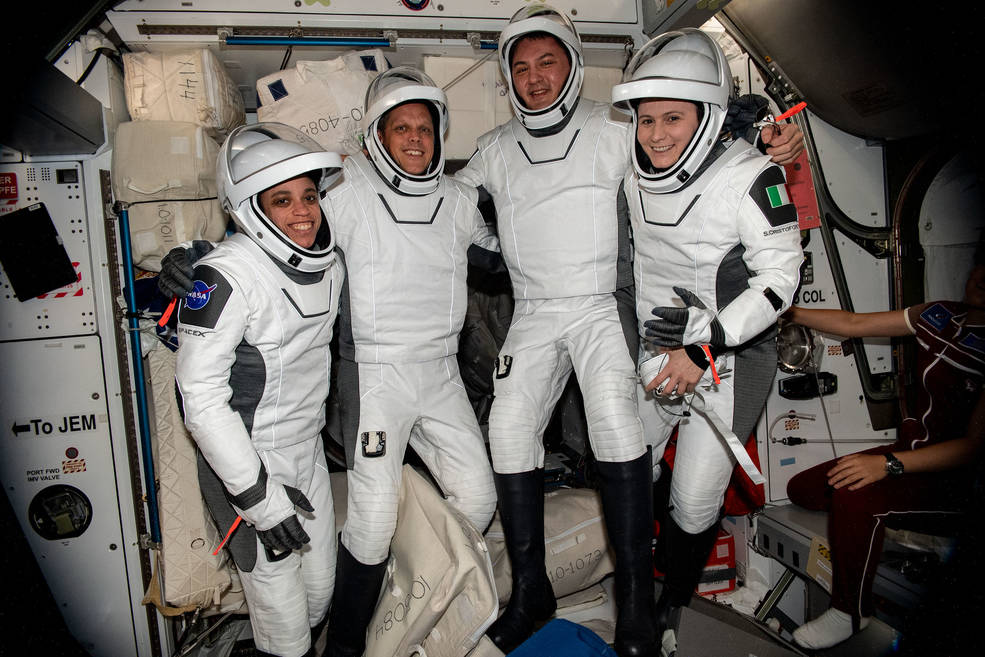NASA Astronauts Wilmore, Williams’ Space Station Science Highlights
Since the start of International Space Station operations more than two decades ago, crews have lived and worked in microgravity to conduct an array of research that benefits life on Earth and future space exploration missions, and perform operational tasks to keep the state-of-the-art scientific lab in its highest-operating condition.
The space station has seen the arrival of more than 270 people. The latest visitors include NASA astronauts Butch Wilmore and Suni Williams, who arrived on June 6 as part of the agency’s Boeing Crew Flight Test.
Both veterans of two previous spaceflights, Wilmore and Williams quickly immersed themselves in station life, living and working in low Earth orbit alongside the Expedition 71 crew. The pair has completed a host of science and operational tasks, including fluid physics research, plant facility maintenance, robotic operations, Earth observations, and more.
Check out some highlights from Wilmore and Williams’ mission below.

(From left) NASA astronauts Suni Williams and Butch Wilmore perform maintenance work on the Plant Water Management (PWM) system. The duo is investigating how fluid physics, such as surface tension, hydroponics, or air circulation, could overcome the lack of gravity when watering and nourishing plants grown in space. The PWM, located in the station’s Harmony module, uses facilities to promote space agricultural activities on spacecraft and space habitat.
NASA
Providing adequate water and nutrition to plants grown in space is critical as missions expand in low Earth orbit and beyond to the Moon and eventually Mars.
Throughout their stay aboard the orbiting laboratory, Wilmore and Williams have tested how different techniques could benefit crop growth in space through the Plant Water Management investigation.
This investigation uses the physical properties of fluids—surface tension, wetting, and system geometry—to overcome the lack of gravity and provide hydration to plants, which could advance the development of hydroponic systems for use during future space travel.

NASA astronaut Butch Wilmore is pictured installing a light meter inside the Veggie facility to obtain light measurements and adjust the light settings inside the plant research device.
NASA
Another investigation taking a deeper look at growing plants in space is the Vegetable Production System, or Veggie. Crews living aboard the space station have used Veggie to grow fresh produce and even flowers, providing astronauts with nutritious fresh foods, boosting morale, and enhancing well-being.
In preparation for upcoming work with Veggie, Wilmore installed a light meter inside the facility, which will help crew members obtain light measurements and adjust light settings in the future when they practice their green thumb in space.

NASA astronaut Suni Williams speaks into the microphone during a HAM Radio session with students from Banda Aceh, Indonesia.
NASA
For more than two decades, astronauts aboard the space station have connected with students and hobbyists worldwide, sharing details about living and working in microgravity.
In early August, Williams used the Ham Radio to connect with students from Banda Aceh, Indonesia, and answer questions about station research as the orbiting lab passed overhead.
These space-to-Earth calls inspire younger generations to pursue interests and careers in STEM and provide school communities with opportunities to learn about space technology and communications.

NASA astronaut Suni Williams observes a pair of Astrobee free-flying robots as they demonstrate autonomous docking maneuvers inside the Kibo Laboratory Module.
NASA
Astrobee, a set of three free-flying robots, are often buzzing around the orbiting lab, demonstrating how technology could assist astronauts with various tasks such as routine chores and maintenance.
Throughout the mission, Williams powered up and observed Astrobee operations as ground controllers remotely mapped the interior of the orbiting lab, practiced docking maneuvers, and tested how the robots carry out various tasks.

(From top left) The Strait of Gibraltar separating Spain and Morocco, captured by NASA astronaut Butch Wilmore; Boeing’s Starliner spacecraft is seen docked to the Harmony module’s forward port. This long-duration, nighttime photo, shows light trails of civilization over the coast of Mumbai, India; (From bottom left) Two Patagonian Lakes, Viedma and Argentino, are pictured as the station orbited 272 miles above; Wilmore is photographed inside the cupola while taking pictures of Earth.
NASA
Since the early days of human spaceflight, astronauts have been photographing Earth from space, capturing the wonder and environmental condition of our home planet.
Orbiting 250 miles above, crew members often spend their free time shooting photos from the cupola, or “window to the world.” The space station’s unique vantage point provides a glimpse at how Earth has changed over time and gives scientists a better look at key data from the perspective of the orbital complex while also improving crews’ mental well-being.
During their mission, the astronaut duo has captured hundreds of photographs of Earth, ranging from auroras, land, sea, orbital sunrises and sunsets, and more.
Wilmore and Williams continue to support daily space station operations as NASA and Boeing evaluate possible return options. For the latest updates on NASA’s commercial crew activities, including the Boeing Crew Flight Test, visit the Commercial Crew Program blog.
For daily space station updates and to learn more about the research being conducted in microgravity, visit the space station blog.





